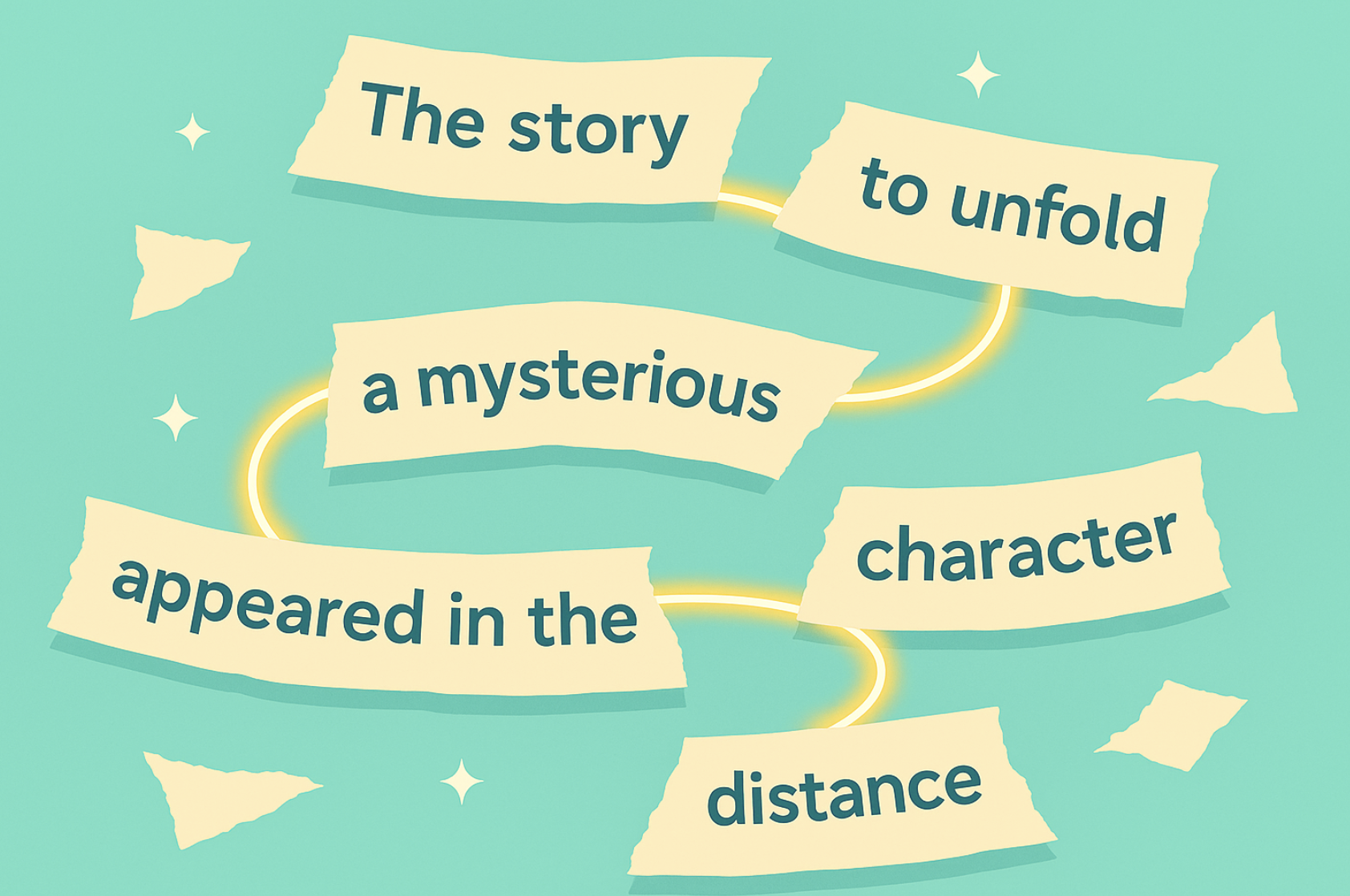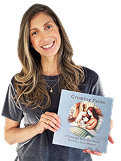Every great children’s book series begins with a spark of imagination. From Harry Potter’s spellbinding escapades to Percy Jackson’s mythological misadventures, these series have left indelible marks on kids and adults alike. They’ve turned reluctant readers into avid page-turners, sparking laughter, curiosity, and even a few teary goodbyes. Just like the classics such as ‘The Chronicles of Narnia’ and ‘Goosebumps’, these beloved and timeless series can be shared with new audiences, creating enduring appeal and shared reading experiences between parents and children.
But how do you keep the magic alive through multiple books? How do you craft a series that doesn’t feel like a flat sequel conveyor belt (looking at you, Hollywood), but instead continues to captivate young readers while standing out on crowded library shelves?
Whether you’re creating a whimsical world with talking animals and friends or weaving life lessons into classroom hijinks, writing a children’s book series requires more than just a good idea; it demands strategy, creativity, and a touch of that magic only a child’s imagination can conjure. Here’s how to do it right.
Who Is Your Audience?
When creating a children’s book series, it’s essential to identify the age group you’re targeting. This will help you tailor your content, tone, and style to meet the needs and interests of your young readers. Children’s book series can cater to various age groups, including picture books (ages 4-8), early readers (ages 5-7), chapter books (ages 7-10), and middle-grade books (ages 8-12).
Understanding your audience’s age group will also help you determine the level of complexity, vocabulary, and themes suitable for your series. For instance, a series for younger readers might focus on simple, imaginative stories with colorful illustrations. In comparison, a series for older readers might explore more complex themes, such as friendship, adventure, and self-discovery.
Some popular children’s book series that cater to specific age groups include:
- Picture books: “The Magic Tree House” by Mary Pope Osborne (ages 4-8)
- Early readers: “The Cat in the Hat” by Dr. Seuss (ages 5-7)
- Chapter books: “Harry Potter” by J.K. Rowling (ages 7-10)
- Middle-grade books: “Percy Jackson and the Olympians” by Rick Riordan (ages 8-12)
Planning Your Series
Developing a strong series concept is a foundational step in creating a successful children’s book series. This concept serves as the guiding blueprint for your story’s overall theme, tone, and direction. It should be unique, engaging, and tailored to your target audience’s age, interests, and reading level.
To craft your series concept, ask yourself:
- What genre or theme will your series explore? (e.g., fantasy, adventure, friendship, mystery)
- What age group are you writing for?
- What tone best fits your story? (e.g., humorous, heartfelt, suspenseful)
- Who are the main characters or protagonists that will drive the story?
- What kind of setting or world will your books take place in?
Clear answers to these questions will help shape a cohesive and compelling series.
Examples of Series with Strong Concepts:
- Diary of a Wimpy Kid by Jeff Kinney – A humorous, highly relatable middle-grade series
- The Babysitters Club by Ann M. Martin – A realistic fiction series centered on friendship and growing up
- The Hardy Boys by Franklin W. Dixon – A young adult mystery/adventure series featuring teen detectives
The Building Blocks of a Compelling Children’s Book Series
Successful series like Flat Stanley and The Chronicles of Narnia all share one essential trait: a strong foundation. It starts with a clear vision. Is your series about a clever group of kids solving mysteries? A family of adventurous elephants navigating magical jungles? Whatever your premise, it needs to be solid enough to support multiple books.
Keep your target age group in mind. Younger children (kindergarten to early elementary) respond best to simple language, humor, and clear moral takeaways. Older kids, on the other hand, are drawn to more complex narratives with layered characters, think Harry and Hermione plotting their next move while Ron scarfs down snacks.
Consistency is crucial. Whether your series follows an overarching quest or presents a collection of stand-alone adventures, readers should know what kind of story world they’re stepping into. But don’t give everything away; keep the surprises coming. Each book should stand on its own, offering a fresh experience while reinforcing familiar themes. This balance helps foster a lasting love of reading.

Crafting Characters That Grow With Your Readers
The heart of any children’s book series lies in its characters. Kids need to see themselves as their protagonists. Relatable heroes with real emotions, struggles, and triumphs are what make the series unforgettable.
Take Harry Potter, who grows from a wide-eyed child living under a staircase to a brave young adult confronting Voldemort. Or Anne of Green Gables, whose spunky spirit evolves through her journey of self-discovery.
Ensure your characters have ample room to grow. Readers, especially kids, love to see themselves reflected in these fictional lives. Incorporate friendships, family dynamics, and even pets (because, let’s be honest, a talking dragon or a mischievous puppy can steal any scene).
Pro Tip: Beware of the cliché trap. Give your characters unique quirks that set them apart. A dinosaur who loves ballet? A witch with a secret knack for baking? The possibilities are endless.
Keeping the Plot Fresh in Every Book
It’s a delicate dance: keeping each book in the series fresh while ensuring continuity. The key? Balance an overarching storyline with standalone plots.
For example, while Percy Jackson battles overarching threats like the Titans, each book introduces new challenges, quests, and creatures. This approach keeps the series engaging, unlike a single book, which might not sustain prolonged interest. Similarly, the Magic Tree House series uses new historical settings to keep readers excited and engaged.
Inject clever twists to avoid predictability. Maybe your characters’ quest leads them to an unexpected underwater kingdom, or their hilarious misstep introduces a problem they didn’t know they needed to solve.
Don’t forget the humor and heart. Children adore books filled with joy, laughter, and “aha!” moments. Even the most fantastical tales benefit from small, relatable moments, like learning a character’s love for chocolate chip cookies or their fear of thunder.
Engaging Themes That Resonate With Children and Parents
Themes are the connective tissue of your series; they’re what make your stories linger long after the final page is turned.
For younger readers, themes might center around kindness, bravery, curiosity, or learning how to be a good friend. As your audience grows, so can your themes. Older children can explore deeper ideas like loyalty, identity, perseverance, and facing fears. The best children’s series, like The Chronicles of Narnia or The Tale of Despereaux, weave in these timeless lessons with subtlety and heart, never straying into preachy territory.
Parents, too, appreciate stories that spark meaningful conversations (and give them five uninterrupted minutes to finish their coffee). A mix of humor, shared challenges, and heartfelt moments turns a good book into a beloved family favorite, one that’s read, re-read, and remembered.
The Art of World-Building in Children’s Book Series
A richly imagined world is the ultimate playground for a child’s imagination. Whether your story takes place in a magical forest, a bustling city, or a faraway galaxy, it needs to feel real and consistent.
Hogwarts, for instance, isn’t just a school for wizards; it’s a living, breathing world where every detail, from the sorting hat to the forbidden forest, feels intentional.
Give your readers space to explore. Perhaps they discover hidden parts of the world created in each book, like new creatures, secret passages, or surprising alliances. A great world invites readers to imagine their adventures within it.
Quick Tip: Avoid over-explaining. Kids love filling in the gaps with their creativity. Trust them, they’ll build entire kingdoms from the simplest hints.
Designing with Kids in Mind: Covers, Illustrations, and Page Count
For children’s books, first impressions matter. A vibrant, eye-catching cover can make the difference between a reader picking up your book or passing it by. Collaborate with an illustrator who understands your vision.
Pay attention to your audience’s age. Younger children will gravitate toward picture books or early chapter books with plenty of illustrations. Older readers enjoy slightly longer chapters, but they also appreciate engaging visuals.
And remember: the length of your book matters. For younger kids, stick to 100–150 pages. Older kids can handle 200–300.
Finally, make your books both visual and physically tactile treasures. Use high-quality paper and fun details like embossing or textured covers. Little touches make big impressions.
Overcoming Challenges
Creating a successful children’s book series can be a challenging and time-consuming process. It’s essential to stay inspired and motivated to produce high-quality content that engages your audience. Here are some tips to help you stay inspired and avoid burnout:
- Read widely: Read books from various genres and age groups to stay inspired and informed.
- Take breaks: Take regular breaks to recharge and refocus.
- Collaborate with others: Work with editors, illustrators, or fellow authors to gain new perspectives and ideas.
- Engage with your audience: Connect with your readers through social media, book signings, or school visits to stay inspired and motivated.
- Set realistic goals: Break your writing process into manageable goals and deadlines to avoid burnout.
Some popular children’s book authors who have successfully overcome challenges and produced beloved series include:
- J.K. Rowling (Harry Potter series)
- Rick Riordan (Percy Jackson and the Olympians series)
- Jeff Kinney (Diary of a Wimpy Kid series)
By understanding your audience, planning your series, and staying inspired, you can create a successful children’s book series that engages and delights your young readers.
Building a Community Around Your Series
Publishing your children’s book series is only the beginning; building a community is where the magic takes root.
Start by creating opportunities for real connection. Host virtual storytime events on platforms like Zoom or Instagram Live. Answer reader questions, do character voices, or even reveal sneak peeks from upcoming books. These moments bring your characters to life and help readers feel like they know you personally.
Engage with your audience on platforms like Goodreads, Facebook, or TikTok, wherever your readers (and their parents) are hanging out. Don’t underestimate the power of an occasional comment reply or a behind-the-scenes post.
Parents, educators, and librarians are some of your greatest allies. Reach out to them with resources like classroom discussion guides, printable activities, or reading challenges. When they see the value in your series, they’ll help spread the word in powerful ways.
Also, give kids ways to interact with your story world outside the pages. Offer coloring pages, character quizzes, interactive games, or even host a fan art or short story contest. These small extras deepen engagement and spark creativity. When young readers feel like they’re part of the adventure, they’re more likely to stick with the series and invite others to join them.
Remember, you’re not just writing books, you’re building a universe kids want to live in and return to again and again.
Need Extra Help? A Writing Coach Can Guide You Through Your Children’s Book Series
Writing a children’s book series is an exciting challenge, but even the most creative writers can benefit from expert guidance. A writing coach can help you shape your series concept, develop characters, and keep each book fresh while maintaining cohesion. With personalized feedback, you’ll ensure that every story connects with young readers and stands strong on its own.
A book writing coach can also support you in self-publishing, from marketing strategies to distribution, helping you build a loyal audience. For the technical aspects, like formatting and cover design, a writing services consultant can provide direction, ensuring your books look polished and professional.
With a writing coach by your side, you’ll navigate the entire process confidently, making your children’s book series a success.
Your Publishing Journey Awaits – Start NowBringing Joy and Laughter Through Timeless Adventures
Writing a children’s book series is more than just putting words on a page; it’s about building a world that sparks imagination, invites laughter, and creates memories that children and families will treasure for years to come. From the first magical chapter to the final heartwarming farewell, your stories have the power to inspire young readers to dream big, think boldly, and see the world through new eyes.
Series like A Series of Unfortunate Events by Lemony Snicket prove just how captivating a strong voice, clever writing, and unforgettable characters can be. With each twist and turn in the Baudelaire siblings’ journey, readers are drawn into a darkly funny, emotionally rich world they don’t want to leave.
So go ahead, unleash your creativity, breathe life into your characters, and build a universe readers will want to visit again and again. Whether your series is read under the covers with a flashlight or shared aloud at bedtime, it might just become the next beloved classic, cherished, reread, and passed down from one generation to the next.
FAQs – Children’s Book Series
Q: What is the golden age of children’s books?
This term typically refers to the mid-19th to early 20th century, when many literary classics were published, Alice’s Adventures in Wonderland, Peter Pan, and The Wind in the Willows. However, some argue we’re in a new golden age now, with diverse voices and rich storytelling reaching more children than ever before.
Q: What is considered the best children’s book of all time?
While opinions vary, books like Where the Wild Things Are by Maurice Sendak, Charlotte’s Web by E.B. White, and Harry Potter and the Sorcerer’s Stone frequently top the lists for their emotional depth, imagination, and enduring appeal.
Q: What kind of books are most popular with children?
Children love books that are:
Funny or silly
Adventure- or mystery-filled
Centered around relatable characters
Heavily illustrated (especially in early stages)
Part of a series, they can stick with
Genres like fantasy, school-based dramas, and animal adventures consistently rank high.
Q: Which is the world’s longest children’s book?
While the Guinness record varies based on how “children’s book” is defined, In Search of Lost Time by Marcel Proust is technically the longest novel. For children, series like Goosebumps or The Baby-Sitters Club collectively span thousands of pages.
Q: What do children need to read?
Foundational reading skills include:
Phonemic awareness
Vocabulary
Comprehension skills
Motivation and confidence
Access to age-appropriate books and read-aloud support
Early literacy is nurtured through regular reading, storytelling, and play.
Q: What should a 12-year-old be reading?
At age 12, readers often gravitate toward middle grade and early YA (young adult) books. Some great choices include:
Percy Jackson and the Olympians
Holes by Louis Sachar
Wonder by R.J. Palacio
The Hunger Games (for advanced readers)
Artemis Fowl by Eoin Colfer
Books with strong themes, humor, or complex plots work well for this age group.
Q: What is the best-selling Dr. Seuss book of all time?
The best-selling Dr. Seuss book is “Green Eggs and Ham,” which has sold over 8 million copies worldwide. Its simple rhymes, playful rhythm, and engaging repetition make it a favorite for early readers and a staple in homes and classrooms.
Q: What was the very first children’s book?
Many consider Orbis Sensualium Pictus (1658) by John Amos Comninius to be the first children’s picture book. However, A Little Pretty Pocket-Book (1744) by John Newbery is widely recognized as the first modern children’s book aimed at entertainment and moral instruction.







